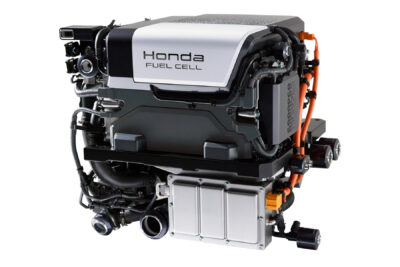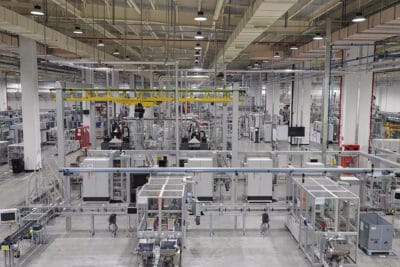Developments in H2 storage using nanoparticles
At the Helmholtz-Zentrum Geesthacht (HZG) in Germany, materials researchers are developing hydrogen storage systems based on light metal hydrides. Now they have published a new concept with which these hydrogen storage systems could be refilled five times faster at a working temperature below 180 degrees.
Storing hydrogen is one of the biggest challenges of hydrogen fuel. In fuel cell vehicles to date, hydrogen is filled into compressed gas tanks at up to 700 bar. This process is expensive and technically demanding. Materials researchers of the Helmholtz Centre Geesthacht now state in a press release that, according to the nanotechnology experts, a promising alternative lies in solid storage tanks based on magnesium-nitrogen.
At the Helmholtz Centre Geesthacht, after looking into magnesium hydrides as storage media for hydrogen for several years, researchers have found that these stored more hydrogen and thus more energy than conventional pressure tanks of the same volume. The scientists illustrate the development with the following example: “With five kilograms of hydrogen, a fuel cell car can travel about 500 kilometres. For five kilograms of hydrogen, a high-pressure tank requires a volume of 122 litres, while a tank based on magnesium hydride requires a volume of only 46 litres”.
The catch: high temperatures of around 300 degrees Celcius are required to refill the tank with hydrogen. According to the materials researchers, however, additives, such as potassium have made it possible to reduce this temperature to below 180 degrees Celcius – and have managed to do this without severely restricting the hydrogen absorption capacity of the system. At the same time, the team has found a way to drastically accelerate the filling and discharging of the tank: For example, the scientists explain that the fuelling process for magnesium-amide-based hydrids would be around 30 minutes for five kilograms of hydrogen. But that the addition of potassium and lithium titanate oxide, which are ground to tiny nanoparticles in special mills together with the magnesium-nitrogen system, the surface area of the individual particles is sufficiently enlarged to allow them to bind more hydrogen. The developed additive acts as a catalyst and accelerates the loading of hydrogen into the reactive hydride composite system. This catalyst allows the refuelling to proceed five times as fast.
“With the results of this study, we are taking a big step towards competitive storage,” says Dr Claudio Pistidda, materials researcher at the Helmholtz Centre Geesthacht and co-author of the current publication entitled ‘Improved kinetic behaviour of Mg(NH2)2-2LiH doped with nanostructured Kmodified-LixTiyOz for hydrogen storage’, which has now been published in the journal Nature Scientific Reports on the subject. In the next step, the research team now intends to work on”optimising the reaction kinetics of these new materials in order to qualify them for the technical application in vehicles.”





0 Comments